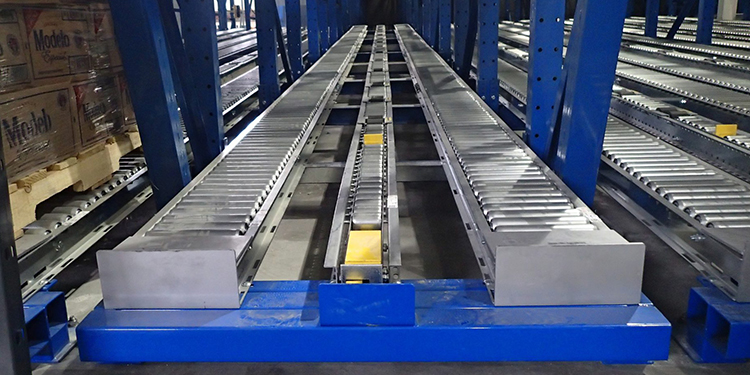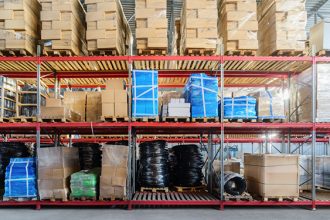Why Pallet Flow Systems Are Designed For Specific Pallets And Loads

The vast majority of industrial steel storage rack systems—including pallet flow (or “gravity flow”) rack—are engineered specifically for a single storage purpose. Likewise, when designing a high-density pallet flow system, there are a number of variables that must be taken into account to ensure its safety, structural integrity and smooth operation. Two of the most critical variables are the load itself and the type of pallet it rests on.
Assessing The Load
In order to design a rack system with adequate capacity to handle a given load, the design engineer must be informed of the weights and dimensions of the individual loads intended for the system.
The weight of the load impacts the type of pallet flow used (full roller, split roller, skate wheel and more), its pitch and the beams used. Further, the depth, width and height of the load (or of the largest load if there are multiple types) must also be known. That’s because the overall capacity of the rack frame is determined by the vertical distance between shelf beams (which brace the structure), the weight of the loads placed on the beams, and the weight of the flow lane tracks.
When calculating beam spacing, typically an additional 12 inches are added to the height of the load—6 inches for pallet height and 6 inches of clearance space to allow a forklift to place or remove the load from the point of entry or exit. Because the beams act as upright supports, the tighter the beam spacing, the denser the design and the stronger the rack bay. If different types of loads are to be stored within the same system, the entire structure must be designed to accommodate the heaviest load to ensure safe operation and minimize the risk of collapse.
Assessing the Pallet
As the point of contact between load and the rollers or skate wheels, the pallet is also a critical element of pallet flow system design. Type, dimension and orientation of the pallets to be used in a system can have a significant impact on its design.
- Type means the material used in the pallet’s construction (wood, plastic, metal or resin). Each material has its own unique set of properties that could impact the ease with which the pallets flow down a lane. This will guide the decision about the type of flow tracks used (roller or wheel) to facilitate smooth operation.
- Dimension is the length and width of the pallet, which determines the number that can fit within a given lane, and the number of lanes a building can accommodate.
- Orientation refers to the construction and configuration of the pallet’s underside. For the smoothest operation and the lowest risk of a hang up within the system, it is optimal to place pallets in a lane with the bottom boards running parallel to the direction of the flow. However, because pallets can be used in both directions, it might be more space efficient to design the system with the bottom boards running perpendicular to the flow. Additionally, the quality, number and thickness of the bottom boards—as well as the shape and orientation of the undersides or feet of certain plastic or metal pallets—must be considered, as they too can impact pallet flow performance.
Looking for more information on how to pick the optimal pallet rack system for your operation? RMI will be presenting “Warehouse Racking Systems for the E-Commerce World,” at ProMat 2019 on Wednesday, April 10 at 2:15 p.m. in Theater B in the South Hall of McCormick Place.


